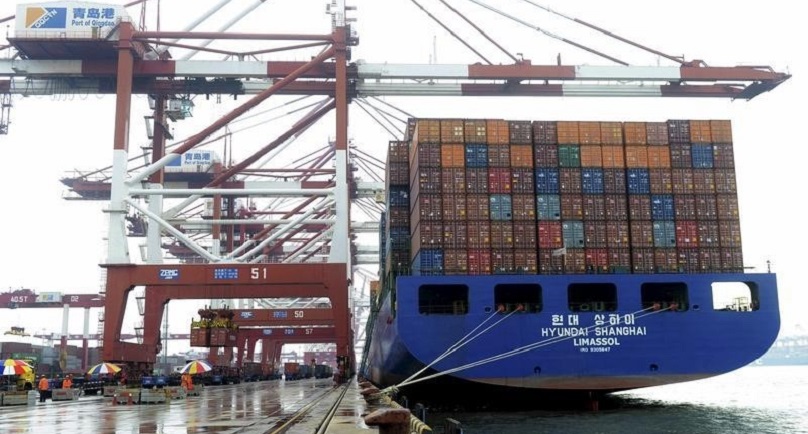Image: A cargo ship waits to be loaded with shipping containers at a port in Qingdao, Shandong province, China, September 1, 2015. REUTERS/Stringer
By Jonathan Cable
LONDON (Reuters) – The coming week will provide clues on whether the global economy is escaping from its lackluster growth rut, amid growing concerns of another downturn which central banks have few tools left to fight.
China has become the focal point for economists as they fear a hard landing there could send countries that have only just escaped from the doldrums reeling back into recession.
Beijing will publish September trade data on Tuesday and inflation on Wednesday and any significant deviation from expectations could set the tone for the week.
The deluge of data from China in coming weeks is likely to point to further weakness, reinforcing expectations Beijing will roll out more stimulus measures to ward off a sharper slowdown.
“After the past few turbulent weeks and continued concerns with regard to the world’s second largest economy, the data will also attract great attention in view of GDP figures due out on October 19,” said economists at DZ Bank.
In the euro zone, final inflation numbers for some member countries will be published during the week with the bloc’s reading on Friday expected to confirm prices fell 0.1 percent annually last month.
Since March the European Central Bank has been pumping 60 billion euros a month into the economy as part of its battle to drive up inflationary pressures but the program has so far failed to spark price rises.
Expectations are that it will eventually have to be extended beyond its planned completion date.
“We think additional ECB easing is in the pipeline,” said Martina von Terzi at UniCredit.
“New stimulus is likely to reflect the ECB’s heightened risk aversion, increasing awareness by the Governing Council that the bank’s inflation projections are too optimistic, and the need to counter upward pressure on the euro.”
But with the ECB’s next rate meeting fast approaching, most bets have already been made and the hawks seem to be winning, so there may not be any extension or expansion of quantitative easing for now.
Next week some of the ECB’s biggest guns are speaking so if their thinking is shifting, it will be the time to send fresh signals before the Oct. 22 gathering of rate setters in Malta.
In contrast, other major central banks long ago set the printing presses running to flood their economies with newly created money, spending around $7 trillion to defend themselves during the global financial crisis.
Indeed, markets are now focusing on when the U.S. Federal Reserve pulls the trigger and tightens policy for the first time in nearly a decade after it took a pass last month.
The minutes of that meeting showed the Fed thought the economy was close to warranting a rate hike, but policymakers wanted firmer evidence the global economic slowdown was not knocking America off course.
Subsequent economic data has shown a sharp slowdown in hiring by U.S. employers.
Retail sales numbers on Wednesday ahead of industrial production and Michigan consumer sentiment on Friday will indicate if there is still a chance of a rise this year.
Inflation data is due on Thursday and four voting members of the Federal Open Market Committee also speak next week.
The International Monetary Fund has urged the Fed and Japanese and European central banks to wait for more signs of recovery before tightening. IMF Chief Christine Lagarde on Thursday repeated her plea to Fed Chair Janet Yellen to stay her hand.
The Bank of England left borrowing costs at a record low 0.5 percent this week, saying the outlook for British inflation in coming months looked weaker than it previously thought. Official figures on Tuesday will likely say it remained at zero last month.
Other central banks meeting next week include those of Peru, Chile, Indonesia, and South Korea but no policy change is expected from any of them.
It had been hoped emerging countries would be the driver behind the global recovery but many of those economies are now in turmoil and Lagarde told policymakers gathered in Peru for the IMF’s annual meeting the world was stuck in a “new mediocre” growth pattern.
Rate setters have little room for error in a low-growth world in which over-leveraged and commodity-dependent emerging economies and a slowing China are major risks, top international financiers said at the IMF meeting on Thursday.
(Editing by Toby Chopra)
Copyright 2015 Thomson Reuters. Click for Restrictions.


